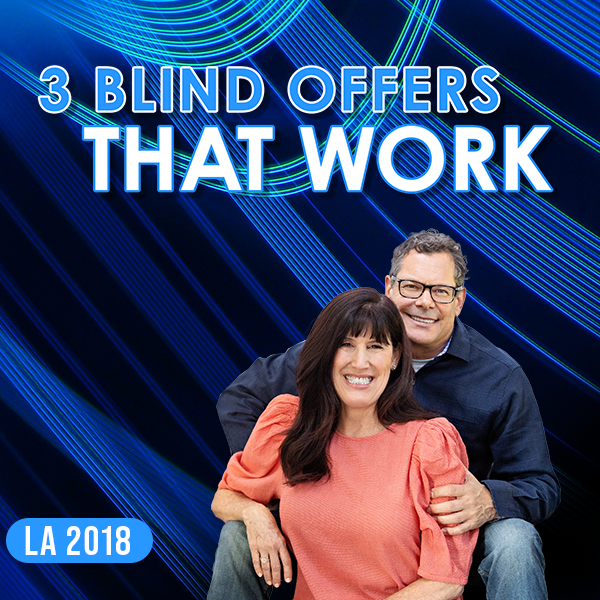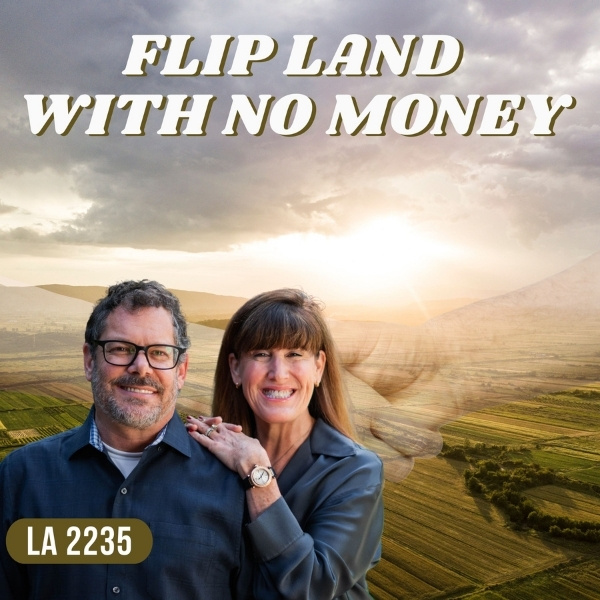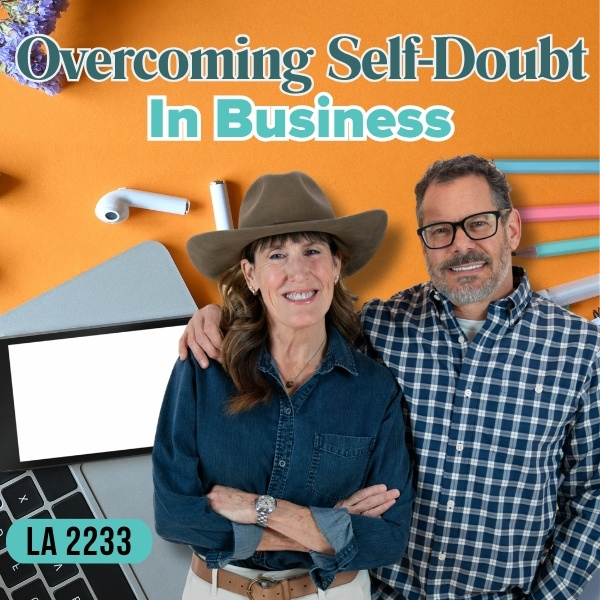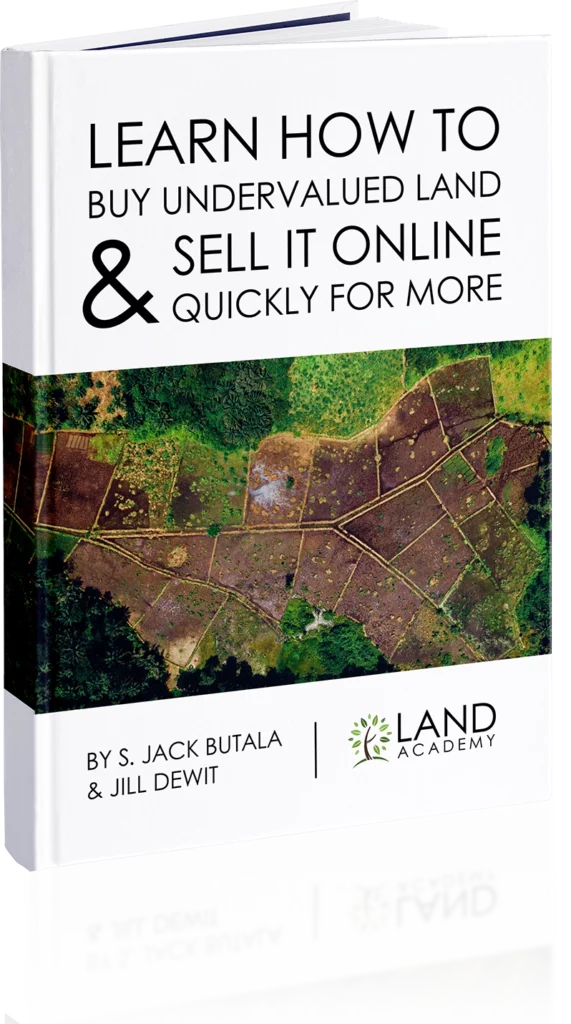3 Types Of Blind Offers That Landowners Can’t Refuse!
Sending the right blind offer to the right landowner can be the game-changer that unlocks incredible opportunities. In this episode, Steven Jack Butala and Jill K DeWit dive into the strategies behind crafting blind offers that deliver results. They break down the three different types, share insights from their extensive experience, and discuss what really works in today’s competitive market. Whether you’re new to the business or a seasoned pro, this episode is packed with actionable advice on how to refine your mailer tactics and close more deals. Tune in to discover the subtle art of making offers that land.
Listen to the podcast here
3 Types Of Blind Offers That Landowners Can’t Refuse!
In this episode 2017, Jill and I are going to talk about the three types of blind offers you can send to landowners that get results. We have tried them all, and I can tell you without a spoiler alert, that one works. As long as you are sending them to the correct property and owner type, you will have some degree of success that you’re pleased with. Each week on the show, we answer a question from our Land Academy member Discord forum, and we take a deep dive into our land-related topics by popular request from our Land Academy community.
Ivan and Randy wrote, “TGIM, everyone. I’m going along with the Land Academy courses and had a few questions regarding mailer results. Per Jack’s equity planner, for the land category, it looks like, every 2,500 mailer units should result in at least one deal, correct? Understandable results may vary, but in your experience, has this been your result? Of the 2,500 mailer units, approximately how many responses, not deals, have you received as responses?”
Aaron wrote back. One of our members had already piped in, so we added that here. “In June, we sent out an 11,000-unit mailer to one state and a 5,000-unit mailer to another. So far, zero deals from the first one and three from the second. The three deals will take $100,000 in total acquisitions to buy, and we should sell combined for around $240,000. I almost had a deal on the first mailer, but somebody outbid me. Sometimes these deals come back, and lots of flaky others are out there in this business.”
“These mailers are only a little over a month old, so I’m still thinking another deal or two could happen. Last I checked, our long-term average was something like 2,000 to 3,000 units per deal. I think when we look back on 2024, that will have gone up some, partially due to competition, so we’re targeting higher dollar amounts, aka larger deals. Yes, it’s possible to send out a 10,000-unit mailer and then get nothing, maybe even 15,000 to 20,000, but if that happens, you need to start looking at what you’re doing, like other things in the process.” I agree with all of that.
I do too. I think both people are correct. Aaron has some experience here and reading between the lines, he sent out a 16,000-unit mailer, which is going to cost him about $10,000, and he’s going to make about $140,000. By anybody’s calculation, that’s an amazing return on investment. If I flip a coin and I get heads, and I flip a coin again and I get tails, I have a 50% response. If I flip the same coin 50,000 times, I’m going to get a 50-50 response.
That’s just statistics, all things being the way that they should. I’m flipping it the correct way, and there’s no wind or other crazy variables like that. It’s the same thing with these mailers. It’s possible for you to send out 15,000 units and get nothing. It’s extremely unlikely. Send out more mail, do more deals, and the return on investment is amazing.
It's possible for you to send out 15,000 units and get nothing, so send out more mail, do more deals, and the return on investment is amazing. Share on XOther variables are whether a live person is answering the phone or how good the person is.
Jill’s piece.
Are they getting a number out of them? That’s the hard stuff that I can’t line up with myself. Mark Smith who’s new to this hates talking on the phone. We’re going to have different results. Mark Smith is going, “Now what?” I’m like, “Hi, this is Jill, what do you get? I want to buy it.” Could you imagine? I should answer the phone like that. That would be funny.
For reference, this is not to make you feel bad, but anybody tuning in to this. We sent out I think a 230-unit mailer, really strategic, and since we’re talking about mailer types today, Jill received five total phone calls back, and we will be doing one deal out of that and it will make more than $100,000. There are a lot of variables. One huge variable is who’s answering the phone and can you make a deal work?
Can you create a deal?
Blind Offers That Get Results
Jill shaved off $400,000 or $500,000 off of the purchase price in this first conversation, and then it kept going down from there because they liked her. Today’s topic is three types of blind offers you can send to landowners to get results.
We’re backing up what are we doing to have this conversation with these sellers. We are sending out very strategic, very well-priced offers to very well-planned, thought-out, calculated, data-driven areas that we’ve identified as good to buy and sell land. What’s interesting is, over the years, we’ve tested them too. There are lots of ways to do this. Jack is going to talk more about it, but there are three main ways to get your sentiment into a seller’s hands that you’re interested in their property. Some work and some don’t, and they have very different results.
Every time I do a mailer, I sit down, close my eyes for a second, and picture this scene like it’s in a sitcom from the 1970s. A mail comes, and the husband or wife is sitting in the kitchen, maybe having coffee, and one of them opens the mail and sees the offer we sent. They open it up because it’s blank on the front and they don’t know what it is. The wife opens it up and says, “That property we bought in Florida twelve years ago, or Nevada, it sounds like somebody wants to buy it for $5,200.”
#1: Postcards
How does that conversation go? Does the person who opens the mail even get that far after they read it, or do they throw it away? Picture that scene, and there are three types of mailers that they’re receiving, all from the same person. One of them is a postcard, and they have 14 or 15 other postcards in there for coupons for their dry cleaning, pizza, and carpet cleaning.
New windows. Renewals by Anderson windows.
Pork chops are $5.99 a pound.
At Albertson’s.
Your postcard is in a stack of stuff that they don’t care about. Maybe they’re looking for pork chops that week, and score. They don’t ever read a postcard. The reason that postcards are so attractive as a potential mailer is that they’re cheap. They’re way cheaper than sending a number ten envelope, which is what we send. You don’t have to price it.
The reason that postcards are so attractive as a potential mailer is because they're cheap. Share on XLess postage.
That’s what I mean.
It’s easy to implement.
They also yield almost nothing. We’ve tried it.
Could you imagine? What is the psychology behind postcards? Because I don’t even look either. When I go through the stack of mail that we all get, I pull the mail out of the thing, and anything resembling newsprint, grocery store ads, those clear things, or a postcard that could be a thing, I don’t even look at them. I don’t give them the time of day. I toss postcards.
They’re attractive because they’re much cheaper per unit. You don’t have to price anything. You can get a list and send it to any printer. They’ll do it and get them out in the mail. They yield nothing. Now you’re spending thousands of dollars on something that yields nothing, and you’ll probably give up on the business. Not good.
#2: Blank Number 10 Envelope
The second two types of mailers that you can send out, and they’re both packaged the same way. Keep picturing that couple in the kitchen in the morning. It’s a number 10 envelope that’s blank with their name on it. It doesn’t say, “Offer for your property inside,” or “Open this, you’ll find a dollar,” or any other gimmick. There’s no gimmick. It’s just a letter that’s correctly addressed to one or both of them, or the company they own, or the trust. You have to open something that you don’t know what it is. It could be important, but it might not be. It could be a credit card that you ordered.
Could be my PIN to the credit card I didn’t know I ordered. I open those.
Everybody does. We got their attention. Inside, if you do it the way that we’re doing it, there are two pieces of paper. Number one, “Dear John and Sally Smith. We would like to purchase your property in XYZ County or on 123 Main Street for $13,322.31.” Of course, you have to read on. “What do you mean $13,000? John, do we still even own that property in Nevada?” “Yeah, I’ve been paying the taxes every year that they come.”
They read on. Somewhere at some point, they find our dot-com, a phone number, and our contact information. They look us up. They see that we’re legit. They potentially will call us back. They may agree with the price. They may not agree with the price. If they have no interest in selling, they throw it away. We get a very positive response this way. Jill takes it from there.
#3: Range Or No Dollar Amount
If Sally Smith calls and Jill gets on the phone with her, they talk about the price, how to get the deal done, and whether or not it works and all the details. A very predictable and consistent percentage for us, which is pretty close to 2,500, works. The third type of letter, same packaging, same scenario, They open it and start to read it. It says, “We’re interested in buying your property in XYZ County. Give me a call.” What do they do?
They go, “Ka-ching, this is great.”
This is that property we bought, and we knew it was going to be worth a million dollars.
“I got somebody who wants to buy it. I can’t wait. I know the farmer down the road. He sold his ag land for $3 million. Here we come.” That’s all they think about.
They have an amazing time thinking that it’s the same mental process as, “What would I do with the money if I won the lottery?” Until they call Jill. She says, “I think it’s worth $13,322.” Do you want 300 or 400 people calling you back thinking they won the lottery, or do you want four people calling you back that say, “This sounds good? We were thinking about selling it anyway.”
I’ve talked to people in these situations who have done the last one you talked about, in which either there is no dollar amount in there or there’s a range. You put a range from here to here. Your range is the bottom number. Yours is the $13,000. “I want to buy your property. I think it’s worth between $13,000 and $30,000.” You see $13,000, they see $30,000. I’m going to tell you right now, that’s all they see.
It’s like when you apply for a job. It’s the same thing. If you see a salary range between $150,000 and $200,000, you’re like, “I’m the $200,000 person.” No, they meant $150,000. The reality is these offers that go out with either a range or no dollar amount, I’ve coached a lot of these people. Everyone is very uncomfortable talking about money. They save it till the end. They have these lovely, wonderful, beautiful, rapport-building conversations that last 15, 20, and 30 minutes thinking, “This is our ticket, we got this.”
At the very end, they find out that it was a wasted half hour because nobody is on the same page with the money. That’s sadly what happens. The beauty of ours is I love not wasting any time. I spend five minutes, and I know if we’re on the same page or not. They’re calling to find out if I’m real. They’re calling to find out, “Is this you on the website I just looked up?” Yep, that’s me, to which I say, “Since we got that out of the way, does this price work for you?” If we need to have a conversation about that, then we continue. They all know where I’m coming from. They are already warmed up.
Pricing A Mailer
Pricing a mailer, the first way to do it is by leaps and bounds the easiest on you, and the easiest on your staff, and you’re going to get some deals out of it by correctly pricing a mailer. It’s also the most difficult. It’s a huge pain point for a lot of people to price a mailer, which is why Jill and I devised Concierge Data.
Pricing a mailer correctly is going to get you some deals; it’s also the most difficult. Share on XIt’s a product. If you go to Offers2Owners.com, that’s our commercial printing company, the same one that we use to send offers out. The people who work there are in the business of figuring out exactly what the range is and what the retail price per acre is so you can price very intelligently, price your mailer, and get the response that you want. That’s why it’s the least used.
It’s of these three, the people who try to get offers to send out to owners to buy real estate. A full-priced mailer, like the one that we use, is the least used. Pricing a mailer is challenging.
That doesn’t make any sense because it’s the one that makes sense.
I agree. We’ve been doing this for a lot of years, and I don’t want to complicate it. This is the way to do this. It is also the least used way, not by Land Academy members, but by the universe out there. Please price your mailer one way or the other whether you do it yourself or use some tool. Make sure you send out a mailer that’s correctly priced, and you’re going to be happy with the results.
Here’s the bottom line. We may or may not have been in this business but this one doubles me. I’ve been doing this for 15 years full-time, and he’s been doing it for 30. I think we have a good handle on it. We’re still testing everything.
No, we’re not.
I know. I’m making a joke of it, but I’m telling you the truth. If you’re not sure, do your own test. This would be a good thing. If you’re like, “I don’t know about this whole putting a number on it.” You send out a couple and see what your results are and see how much time and energy, sadly wasted, goes into sending out something like, “I want to buy your house.”
That’s what I want. If you send me a letter saying you want to buy my house, I’m going to be like, “Let’s talk, baby because I’ve got a number,” and my number is a make-a-move number. That’s the reality. Most of these people have a make-a-move number and they’re excited. They think that’s what they’ll get. It’s hard to reel them back in. As I said, you’re just wasting so much time, energy, and money going through these people. That’s what does happen.
We live in a land of increasing competition. When it comes to sending out or contacting owners, make sure that you have fully researched how to answer the phone and the key points about communicating with your seller. Jill does an absolute career-shattering job at dealing with these sellers. It’s partially the reason that we’re so successful.
Thank you.
Inspirational
It’s imperative. It used to be optional. You’ve got to answer the phone correctly and engage the potential sellers. Jill, do you have anything inspirational to share with us today?
Yeah, and it ties into today. How do you get your motivation up, your spirit up, and your attitude up, and ready for these people when the call comes in? When the phone rings, let’s just say it’s you answering the phone. Sometimes it’s me, depending on the mailer and what’s going on with our company. It’s me or my staff. I’m involved in answering the phone.
You have to assume at the very next call that the reason they’re calling you is because they got your offer. They love your offer. The property is dreamy, and you’re going to be looking to find stuff wrong with it. That is the attitude you have to have every single time. If you’re approaching these phone calls like, “I hope it’s not like the last guy. He chewed me out,” you’re going to automatically not be in the right frame of mind. You’re not going to answer the phone the same. You’re going to be in a bit of a bad mood, and it’s going to come across.
Sometimes you don’t realize how you go into it affects the outcome so easily. If you go into it with a positive mindset, “This is it, this is the one, I know it,” maybe even put a sticky note that says, “This phone call is going to be the home run.” I would seriously put that sticky note on your computer so you’re staring at it every time. You’re going to go into it assuming the best and watch what happens. That’s my inspiration for today. What about you, Jack?
Sometimes, you don't realize how you go into the call affects the outcome so easily. Share on XIt’s very important to align yourself with somebody or a group who is successfully doing what you’re attempting to accomplish. I don’t care if you’re trying to learn how to play the guitar or if you’re trying to become a wealthy or amazing salesperson for used cars. If you’re trying to do what we do very successfully, align yourself with people like us in the Land Academy group so that you can ask them questions and learn with them.
They’ll tell you flat out, “I sent a bunch of postcards out. I wasted $10,000 sending postcards out until I did fill in the blank,” or “Florida didn’t work out for me, but Tennessee worked out great,” or “Northern Wisconsin, I do a deal a month there, and here’s why.” They’ll help you. They were right where you are at some point in their career. Please try to get yourself involved in a group that is already accomplishing what you want to accomplish.
Try to get yourself involved in a group that is already accomplishing what you want to accomplish. Share on XThat’s excellent.
Join us next Wednesday for another interesting episode. You are not alone in your real estate ambition. We’re Jack and Jill, information and inspiration to buy undervalued property.















